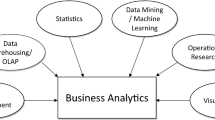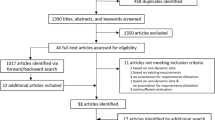Abstract
Process-aware information systems (PAIS) are systems relying on processes, which involve human and software resources to achieve concrete goals. There is a need to develop approaches for modeling, analysis, improvement and monitoring processes within PAIS. These approaches include process mining techniques used to discover process models from event logs, find log and model deviations, and analyze performance characteristics of processes. The representational bias (a way to model processes) plays an important role in process mining. The BPMN 2.0 (Business Process Model and Notation) standard is widely used and allows to build conventional and understandable process models. In addition to the flat control flow perspective, subprocesses, data flows, resources can be integrated within one BPMN diagram. This makes BPMN very attractive for both process miners and business users, since the control flow perspective can be integrated with data and resource perspectives discovered from event logs. In this paper, we describe and justify robust control flow conversion algorithms, which provide the basis for more advanced BPMN-based discovery and conformance checking algorithms. Thus, on the basis of these conversion algorithms low-level models (such as Petri nets, causal nets and process trees) discovered from event logs using existing approaches can be represented in terms of BPMN. Moreover, we establish behavioral relations between Petri nets and BPMN models and use them to adopt existing conformance checking and performance analysis techniques in order to visualize conformance and performance information within a BPMN diagram. We believe that the results presented in this paper can be used for a wide variety of BPMN mining and conformance checking algorithms. We also provide metrics for the processes discovered before and after the conversion to BPMN structures. Cases for which conversion algorithms produce more compact or more complicated BPMN models in comparison with the initial models are identified.






















































Similar content being viewed by others
Notes
In order to give an intuitive example, we consider a simple and expressive synthetic event log. The analysis of process models discovered from real-life event logs is demonstrated in Sect. 9.
Note that due to the free-choice structure of \(\mathord {\textit{PN}}\), postsets either coincide or do not intersect.
Note that we consider system nets without hanging places.
All the places have the same place node \(\mathcal {N}\), obtained on the previous step of the algorithm.
These logs exclude user and commercial sensible information like names, credit cards and invoices.
All the models presented in this section are discovered using ProM framework
By CSR1, CSR2, CSR3 and CSR4 we denote event logs of the Computer Reservation System, containing only positive cases and/or booking flight event.
References
van der Aalst, W.M.P.: Process Mining—Discovery, Conformance and Enhancement of Business Processes. Springer, Berlin (2011)
Mans, R.S., Schonenberg, M.H., Song, M., van der Aalst, W.M.P., Bakker, P.J.M.: Application of process mining in healthcare: a case study in a Dutch hospital. In: Biomedical engineering systems and technologies. communications in computer and information science, vol. 25, pp. 425–438. Springer, Berlin (2009)
Mitsyuk, A.A., Kalenkova, A.A., Shershakov, S.A., van der Aalst, W.M.P.: Using process mining for the analysis of an e-trade system: a case study. Bus. Informatics 3, 15–23 (2014)
Trcka, N., Pechenizkiy, M.: From local patterns to global models: towards domain driven educational process mining. In: 9th International conference on intelligent systems design and applications (ISDA), pp. 1114–1119. IEEE Computer Society (2009)
IEEE task force on process mining: process mining manifesto. In: Business Process Management Workshops, Lecture Notes in Business Information Processing, vol. 99, pp. 169–194. Springer (2012)
OMG: Business Process Model and Notation (BPMN), Version 2.0. http://www.omg.org/spec/BPMN/2.0 (2011)
Muehlen, M.Z., Ho, D.T.: Service process innovation: a case study of bpmn in practice. In: Proceedings of the proceedings of the 41st annual Hawaii international conference on system sciences, HICSS ’08, p. 372. IEEE Computer Society, Washington (2008)
Muehlen, M.Z., Recker, J.: How much language is enough? Theoretical and practical use of the business process modeling notation. In: Proceedings of the 20th international conference on advanced information systems engineering. CAiSE ’08, pp. 465–479. Springer, Berlin, Heidelberg (2008)
Recker, J.: Opportunities and constraints: the current struggle with BPMN. Business Process Manag. J. 16(1), 181–201 (2010)
van der Aalst, W.M.P., Adriansyah, A., van Dongen, B.F.: Causal nets: a modeling language tailored towards process discovery. In: CONCUR, Lecture Notes in Computer Science, pp. 28–42. Springer (2011)
van der Aalst, W.M.P., Buijs, J.C.A.M., van Dongen, B.F.: Towards improving the representational bias of process mining. In: IFIP international symposium on data-driven process discovery and analysis (SIMPDA 2011). Lecture Notes in Business Information Processing, vol. 116, pp. 39–54. Springer, Berlin (2012)
van der Aalst, W.M.P., Weijters, A.J.M.M., Maruster, L.: Workflow mining: discovering process models from event logs. IEEE Trans. Knowl. Data Eng. 16(9), 1128–1142 (2004)
Cardoso, J., Mendling, J., Neumann, G., Reijers, H.A.: A discourse on complexity of process models. In: Proceedings of the 2006 international conference on business process management workshops. BPM’06, pp. 117–128. Springer, Berlin (2006)
Latva-Koivisto, A.: Finding a complexity measure for business process models Tech. rep, Helsinki University of Technology, Espoo, Helsinki (2001)
Laue, R., Gruhn, V.: Complexity metrics for business process models. In: Business Information Systems, 9th international conference on business information systems, BIS 2006, pp. 1–12 (2006)
Sánchez-González, L., García, F., Mendling, J., Ruiz, F., Piattini, M.: Prediction of business process model quality based on structural metrics. In: ER, Lecture Notes in Computer Science. vol. 6412, pp. 458–463. Springer (2010)
van der Aalst, W.M.P., Adriansyah, A., van Dongen, B.F.: Replaying history on process models for conformance checking and performance analysis. Wiley Interdiscp. Rev. Data Min. Knowl. Discov. 2(2), 182–192 (2012)
van der Aalst, W.M.P.: The application of Petri nets to workflow management. J. Circuits Syst. Comput. 8(1), 21–66 (1998)
OMG: OMG Unified Modeling Language 2.5. OMG. http://www.omg.org/spec/UML/2.5/ (2013)
Kindler, E.: On the semantics of EPCs: a framework for resolving the vicious circle. In: International Conference on Business Process Management (BPM 2004), Lecture Notes in Computer Science, vol. 3080, pp. 82–97. Springer (2004)
Mendling, J., van der Aalst, W.M.P.: Towards EPC semantics based on state and context. In: Proceedings of fifth workshop on event-driven process chains (WI-EPK 2006), pp. 25–48. Gesellschaft für Informatik, Bonn, Vienna (2006)
van der Aalst, W.M.P., Hirnschall, A., Verbeek, H.M.W.: An alternative way to analyze workflow graphs. In: Proceedings of the 14th international conference on advanced information systems engineering (CAiSE’02), vol. 2348, pp. 535–552 (2002)
Favre, C., Fahland, D., Völzer, H.: The relationship between workflow graphs and free-choice workflow nets. Inf. Syst. 47, 197–219 (2015)
Conforti, R., Dumas, M., Garcia-Baneulos, L., La Rosa, M.: Beyond tasks and gateways: discovering BPMN models with subprocesses, boundary events and activity markers. In: International conference in business process management (BPM), pp. 101–117. Springer, Haifa (2014)
Leemans, S.J.J., Fahland, D., van der Aalst, W.M.P.: Discovering block-structured process models from event logs: a constructive approach. In: Application and Theory of Petri Nets and Concurrency, Lecture Notes in Computer Science. vol. 7927, pp. 311–329. Springer (2013)
Weijters, A.J.M.M., Ribeiro, J.T.S.: Flexible heuristics miner (FHM). In: IEEE symposium on computational intelligence and data mining (CIDM 2011), pp. 310–317. IEEE, Paris, France (2011)
Weerdt, J.D., vanden Broucke, S.K.L.M., Caron, F.: Bidimensional process discovery for mining bpmn models. In: Fournier, F., Mendling, J. (eds.) Business Process Management Workshops, Lecture Notes in Business Information Processing, vol. 202, pp. 529–540. Springer, (2014)
de Leoni, M., van der Aalst, W.M.P.: Data-aware process mining: discovering decisions in processes using alignments. In: ACM symposium on applied computing (SAC 2013), pp. 1454–1461. ACM Press (2013)
Burattin, A., Sperduti, A., Veluscek, M.: Business models enhancement through discovery of roles. In: IEEE symposium on computational intelligence and data mining, CIDM 2013, Singapore, pp. 103–110 (2013)
Song, M., van der Aalst, W.M.P.: Towards comprehensive support for organizational mining. Decis. Support Syst. 46(1), 300–317 (2008)
de Leoni, M., van der Aalst, W.M.P., van Dongen, B.F.: Data- and resource-aware conformance checking of business processes. In: BIS, Lecture Notes in Business Information Processing. vol. 117, pp. 48–59. Springer (2012)
van der Aalst, W.M.P., Rubin, V.A., Verbeek, H.M.W., van Dongen, B.F., Kindler, E., Günther, C.W.: Process mining: a two-step approach to balance between underfitting and overfitting. Softw. Syst. Model. 9(1), 87–111 (2010)
Bergenthum, R., Desel, J., Lorenz, R., Mauser, S.: Process mining based on regions of languages. In: International conference on business process management (BPM 2007), Lecture Notes in Computer Science. vol. 4714, pp. 375–383. Springer (2007)
Carmona, J., Cortadella, J.: Process mining meets abstract interpretation. In: ECML/PKDD 210, Lecture Notes in Computer Science, vol. 6321, pp. 184–199. Springer (2010)
Günther, C.W., van der Aalst, W.M.P.: Fuzzy mining: adaptive process simplification based on multi-perspective metrics. In: International conference on business process management (BPM 2007), Lecture Notes in Computer Science, vol. 4714, pp. 328–343. Springer (2007)
Russell, N., ter Hofstede, A.H.M., van der Aalst, W.M.P., Mulyar, N.: Workflow control-flow patterns: a revised view. Tech. Rep. BPM-06-22, BPM Center. http://bpmcenter.org/wp-content/uploads/reports/2006/BPM-06-22.pdf (2006)
Buijs, J.C.A.M., van Dongen, B.F., van der Aalst, W.M.P.: A Genetic algorithm for discovering process trees. In: IEEE Congress on evolutionary computation (CEC 2012), pp. 1–8. IEEE Computer Society (2012)
Desel, J., Esparza, J.: Free Choice Petri Nets. Cambridge University Press, New York (1995)
Murata, T.: Petri nets: properties, analysis and applications. Proc. IEEE 77(4), 541–580 (1989)
Wynn, M., Verbeek, H., van der Aalst, W.M.P., Hofstede, A., Edmond, D.: Reduction rules for YAWL workflows with cancellation regions and OR-join. Inf. Softw. Technol. 51(6), 1010–1020 (2009)
Adriansyah, A., van Dongen, B.F., van der Aalst, W.M.P.: Conformance checking using cost-based fitness analysis. In: EDOC, pp. 55–64. IEEE Computer Society (2011)
WFMC: XML Process Definition Language Version 2.2. In: Technical Report WFMC-TC-1025, Workflow Management Coalition, Lighthouse Point, Florida, USA (2012)
Kalenkova, A.A., de Leoni, M., van der Aalst, W.M.P.: Discovering, analyzing and enhancing BPMN models using ProM. In: Business Process Management—12th International Conference, BPM 2014, Haifa, Israel, September 7–11, 2014. Proceedings (2014). In press
Buijs, J.C.A.M.: Environmental Permit Application Process. CoSeLoG project (2014)
Buijs, J.C.A.M.: Receipt phase of an environmental permit application process. CoSeLoG project (2014)
van der Aalst, W.M.P.: A general divide and conquer approach for process mining. In: Federated conference on computer science and information systems (FedCSIS 2013), pp. 1–10 (2013)
Kalenkova, A.A., Lomazova, I.A.: Discovery of cancellation regions within process mining techniques. Fundam. Inform. 133(2–3), 197–209 (2014)
Kalenkova, A.A., Lomazova, I.A., van der Aalst, W.M.P.: Process model discovery: A method based on transition system decomposition. In: Application and Theory of Petri Nets and Concurrency, Lecture Notes in Computer Science, pp. 71–90. Springer (2014)
Author information
Authors and Affiliations
Corresponding author
Additional information
Communicated by Prof. Ulrich Frank.
This work is supported by the Scientific Fund of the National Research University Higher School of Economics and is supported by Russian Fund for Basic Research (Project 15-37-21103).
Rights and permissions
About this article
Cite this article
Kalenkova, A.A., van der Aalst, W.M.P., Lomazova, I.A. et al. Process mining using BPMN: relating event logs and process models. Softw Syst Model 16, 1019–1048 (2017). https://doi.org/10.1007/s10270-015-0502-0
Received:
Revised:
Accepted:
Published:
Issue Date:
DOI: https://doi.org/10.1007/s10270-015-0502-0




